George Campbell RHA (1917-1979) Clifden, Connemara, No.1 Oil on board, 75 x 62.5cm (29½ x 24½'') Signed; inscribed verso Provenance: With Ritchie Hendriks Gallery, label verso. Exhibited: Ritchie Hendriks Gallery, 1967. With the creation of the Free State in 1922, Irelands artists took it upon themselves to establish and celebrate their country as an entity entirely separate from Britain. As such, artists sought images of a past Ireland, flocking to the West to gain inspiration from the unadulterated culture that prevailed in those remote hamlets. These scenes have now been immortalised in a multitude of works by such names as Charles Lamb, Paul and Grace Henry and Jack B. Yeats. Forty years later, the tradition of painting in Western Ireland prevailed, its wildness, spirit and community continuing to attract artists in search of the perfect subject. Alongside his friend, Gerard Dillon George Campbell made numerous trips to Connemara and, in the 1960s, he began a series of paintings which centred on the town of Clifden. The current lot beautifully embodies the work that Campbell produced at this time. Focussing more on the mood and atmosphere of Clifden, rather than its structural representation, Campbell provides a semi-abstracted townscape in which the general outlines and shapes fight to be recognised from within a myriad of blue. Flanked by the Atlantic Ocean and set against the backdrop of the Twelve Bens, Clifden is portrayed as a town surrounded by the inhospitable. To the foreground, a cluster of trees sways towards the left, beaten by the uncaring wind as it rolls off the water. Overhead, the moon breaks through the clouds, fleetingly illuminating this scene, before once again being engulfed by approaching storms. And, yet, it is here, against the odds, that this small town flourishes. Using the reflecting moonlight to draw the viewers eye along the central road, we are brought into the painting and welcomed into the heart of the town; a haphazard, yet charming, collection of houses and shops all overlooked respectively by St. Josephs and Christ Church on top of the hill. As somebody who immersed himself with the community, Campbell uses his painting to extend this invitation to his viewers, beckoning them inwards. George Campbell is recorded as painting only in his studio, claiming that the memories that accompany him there represent those things that are worth remembering. It is, therefore, not surprising that this portrayal of Clifden is but an impression of the physical town. Instead, with his soft, blurring brushstrokes, Campbell has evoked the true character of Clifden and gifted his viewers with an intimation of the solace that this town provides for those who visit it. Helena Carlyle, November 2019. George Campbell RHA (1917-1979) Clifden, Connemara, No.1 Oil on board, 75 x 62.5cm (29½ x 24½'') Signed; inscribed verso Provenance: With Ritchie Hendriks Gallery, label verso. Exhibited: Ritchie Hendriks Gallery, 1967. With the creation of the Free State in 1922, Irelands artists took it upon themselves to establish and celebrate their country as an entity entirely separate from Britain. As such, artists sought images of a past Ireland, flocking to the West to gain inspiration from the unadulterated culture that prevailed in those remote hamlets. These scenes have now been immortalised in a multitude of works by such names as Charles Lamb, Paul and Grace Henry and Jack B. Yeats. Forty years later, the tradition of painting in Western Ireland prevailed, its wildness, spirit and community continuing to attract artists in search of the perfect subject. Alongside his friend, Gerard Dillon George Campbell made numerous trips to Connemara and, in the 1960s, he began a series of paintings which centred on the town of Clifden. The current lot beautifully embodies the work that Campbell produced at this time. Focussing more on the mood and atmosphere of Clifden, rather than its structural representation, Campbell prov
George Campbell RHA (1917-1979) Clifden, Connemara, No.1 Oil on board, 75 x 62.5cm (29½ x 24½'') Signed; inscribed verso Provenance: With Ritchie Hendriks Gallery, label verso. Exhibited: Ritchie Hendriks Gallery, 1967. With the creation of the Free State in 1922, Irelands artists took it upon themselves to establish and celebrate their country as an entity entirely separate from Britain. As such, artists sought images of a past Ireland, flocking to the West to gain inspiration from the unadulterated culture that prevailed in those remote hamlets. These scenes have now been immortalised in a multitude of works by such names as Charles Lamb, Paul and Grace Henry and Jack B. Yeats. Forty years later, the tradition of painting in Western Ireland prevailed, its wildness, spirit and community continuing to attract artists in search of the perfect subject. Alongside his friend, Gerard Dillon George Campbell made numerous trips to Connemara and, in the 1960s, he began a series of paintings which centred on the town of Clifden. The current lot beautifully embodies the work that Campbell produced at this time. Focussing more on the mood and atmosphere of Clifden, rather than its structural representation, Campbell provides a semi-abstracted townscape in which the general outlines and shapes fight to be recognised from within a myriad of blue. Flanked by the Atlantic Ocean and set against the backdrop of the Twelve Bens, Clifden is portrayed as a town surrounded by the inhospitable. To the foreground, a cluster of trees sways towards the left, beaten by the uncaring wind as it rolls off the water. Overhead, the moon breaks through the clouds, fleetingly illuminating this scene, before once again being engulfed by approaching storms. And, yet, it is here, against the odds, that this small town flourishes. Using the reflecting moonlight to draw the viewers eye along the central road, we are brought into the painting and welcomed into the heart of the town; a haphazard, yet charming, collection of houses and shops all overlooked respectively by St. Josephs and Christ Church on top of the hill. As somebody who immersed himself with the community, Campbell uses his painting to extend this invitation to his viewers, beckoning them inwards. George Campbell is recorded as painting only in his studio, claiming that the memories that accompany him there represent those things that are worth remembering. It is, therefore, not surprising that this portrayal of Clifden is but an impression of the physical town. Instead, with his soft, blurring brushstrokes, Campbell has evoked the true character of Clifden and gifted his viewers with an intimation of the solace that this town provides for those who visit it. Helena Carlyle, November 2019. George Campbell RHA (1917-1979) Clifden, Connemara, No.1 Oil on board, 75 x 62.5cm (29½ x 24½'') Signed; inscribed verso Provenance: With Ritchie Hendriks Gallery, label verso. Exhibited: Ritchie Hendriks Gallery, 1967. With the creation of the Free State in 1922, Irelands artists took it upon themselves to establish and celebrate their country as an entity entirely separate from Britain. As such, artists sought images of a past Ireland, flocking to the West to gain inspiration from the unadulterated culture that prevailed in those remote hamlets. These scenes have now been immortalised in a multitude of works by such names as Charles Lamb, Paul and Grace Henry and Jack B. Yeats. Forty years later, the tradition of painting in Western Ireland prevailed, its wildness, spirit and community continuing to attract artists in search of the perfect subject. Alongside his friend, Gerard Dillon George Campbell made numerous trips to Connemara and, in the 1960s, he began a series of paintings which centred on the town of Clifden. The current lot beautifully embodies the work that Campbell produced at this time. Focussing more on the mood and atmosphere of Clifden, rather than its structural representation, Campbell prov
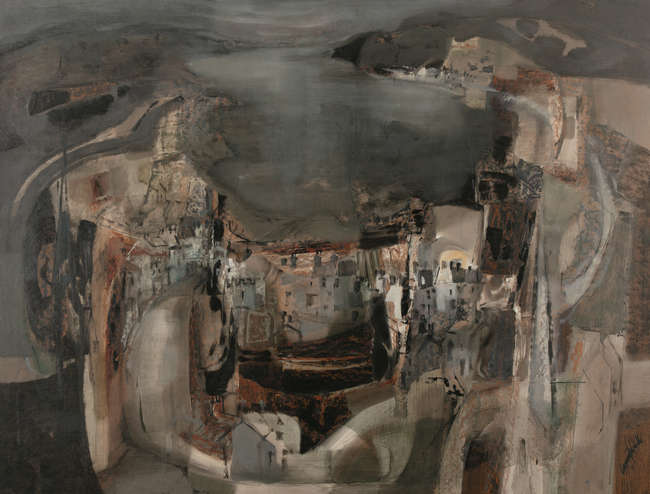
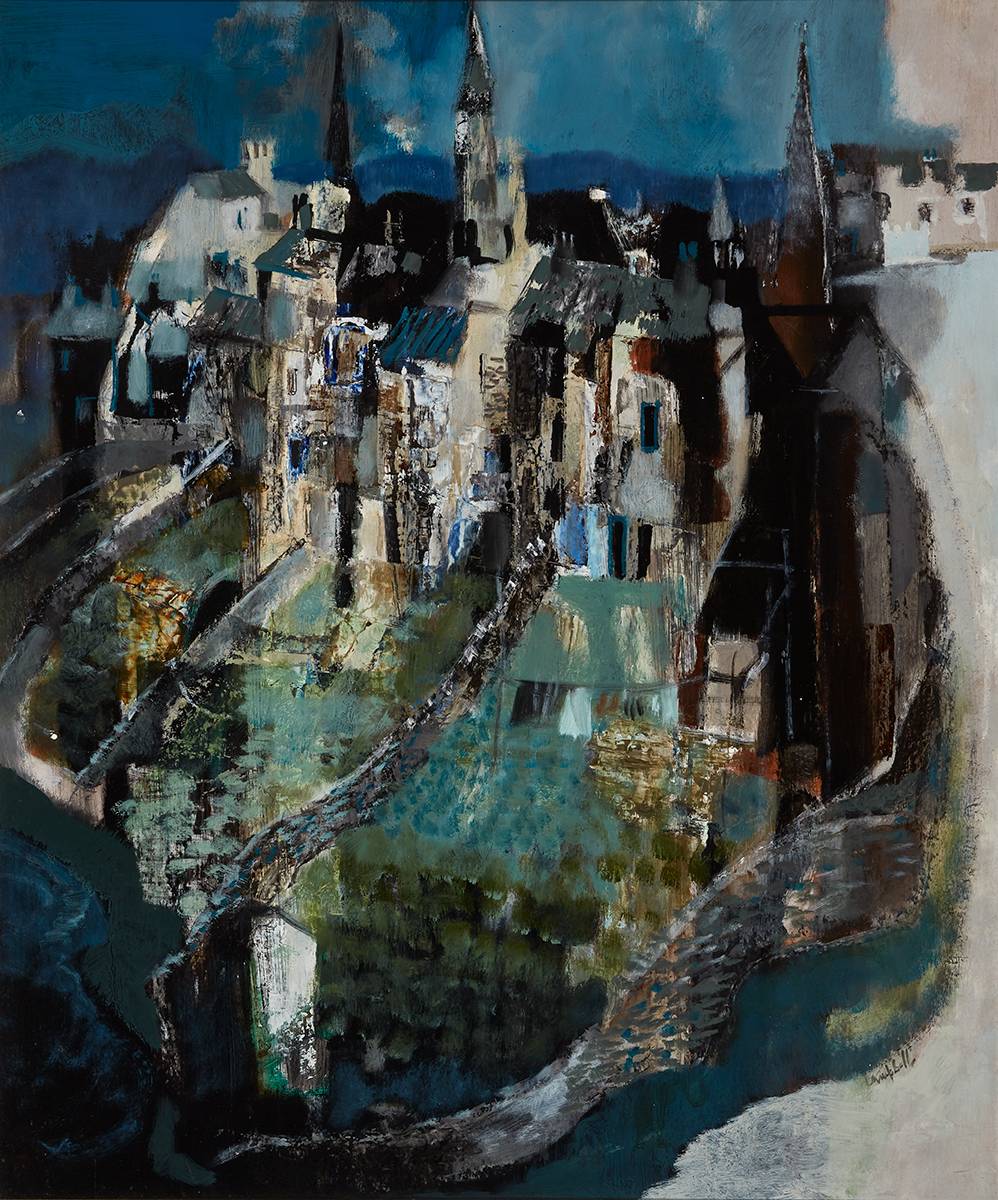

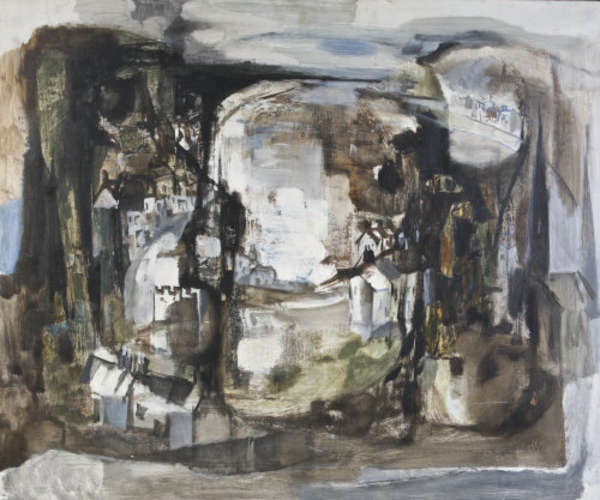
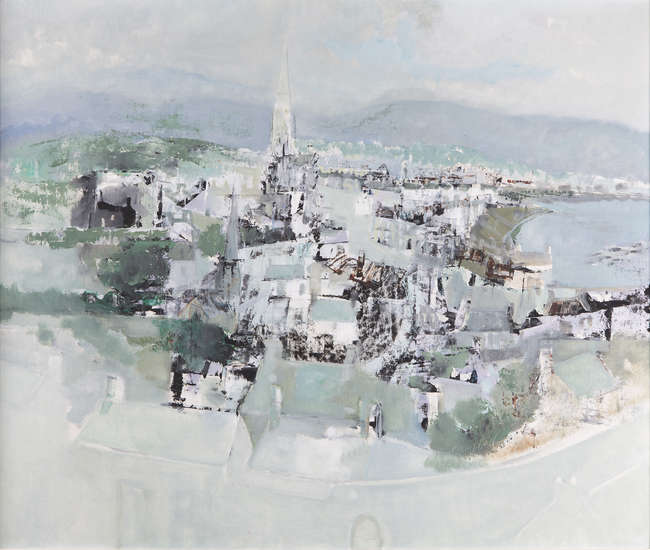
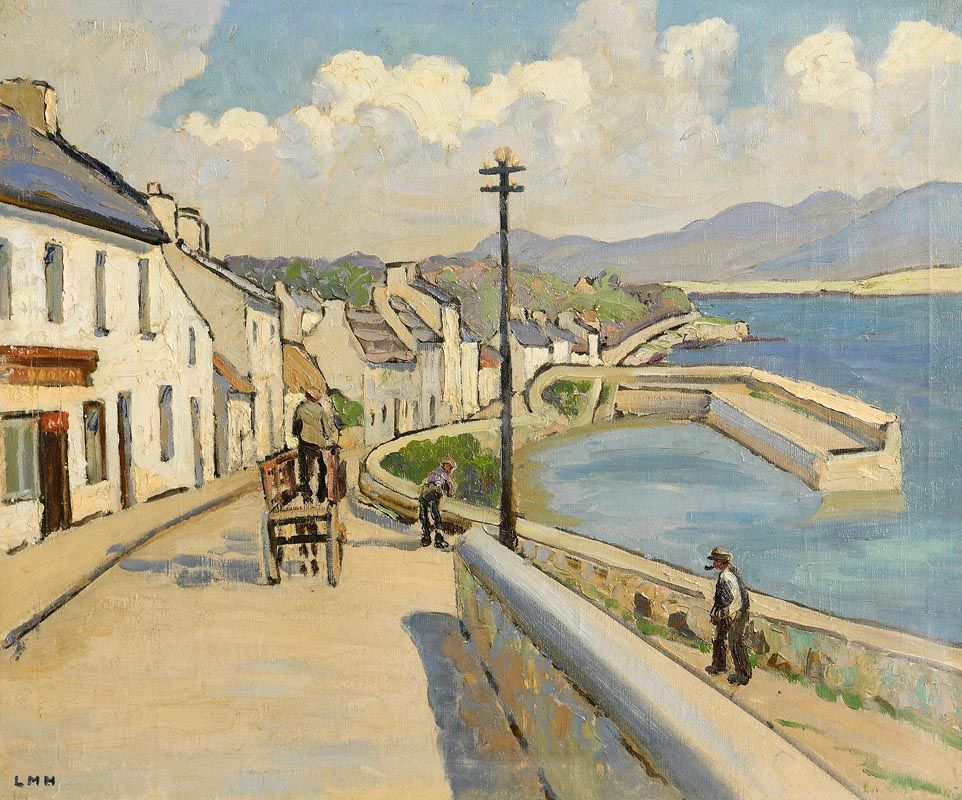

Try LotSearch and its premium features for 7 days - without any costs!
Be notified automatically about new items in upcoming auctions.
Create an alert